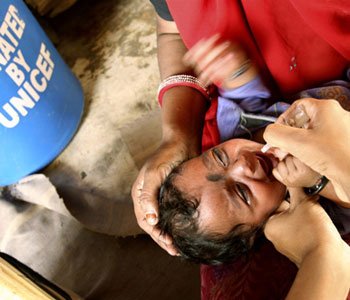The New York Times’ Anne Barnard paints a grim picture of life inside Syria that speaks to the massive inadequacy of humanitarian relief efforts.
Some five million Syrians are now refugees in their own country, many living hand-to-mouth in vacant buildings, schools, mosques, parks and the cramped homes of relatives. Others are trapped in neighborhoods isolated by military blockades, beyond the reach of aid groups. Already desperately short of food and medicine as winter closes in, they could begin to succumb in greater numbers to hunger and exposure, aid workers say…
Tarik Jasarevic, a spokesman for the World Health Organization, said that replacing the prescription drugs once provided by the government would cost $500 million yearly, dwarfing his agency’s entire budget in Syria.
In the southern province of Dara’a, a third of health workers have fled, especially from rural areas, Mr. Abdel-Jelil of Unicef said. He described one woman who crossed the front lines to bring her children to the city for vaccines.
The whole story is worth a read. That last part, though, comes as the World Health Organization believes there is an ongoing Polio outbreak inside Syria. There are at least two initially confirmed cases of polio and at least 22 other suspected cases. This would be the worst polio outbreak in the country since 1999. Before the war, Syria’s health infrastructure basically reached every child with the polio vaccine. Today, UNICEF estimates that disruptions in health services have left about half a million children not immunized.
UN agencies and national health systems typically respond to outbreaks like this — even outbreaks in the midst of conflict — by launching region-wide or country wide vaccination campaigns in which they scale up efforts for a short period of time to reach a maximum number of people. Think of it as a vaccine surge. A year ago, UNICEF was preparing to do just that in Syria. This is from a UN radio program last December:
Approximately 4,000 health workers and volunteers are participating in the campaign across 13 of the country’s 14 governorates.
UNICEF spokesperson Marixie Mercado says since the campaign started on 26 November, more than 1 million children have received polio and measles vaccines.
“The numbers speak for themselves but our field workers are telling us that throughout the country you are seeing long lines of parents with their children waiting for the vaccines even in places like Homs. One of our field workers is talking about visiting health centres where the sounds of the children crying after they have been vaccinated are mixing with the sounds of gunshots and shelling out in the streets. It’s an amazing campaign that really has been made possible with huge support from the community.”
Right now, the Polio outbreak is confined to one region in Syria. But because it is so highly communicable there is acute danger that it will spread to other countries in the region. “Planning is underway for a heavy response in seven countries across the region,” says Oliver Rosenbauer of the WHO. “You have immunity gaps. Most countries planned to mount a vaccination campaign in refugee camps in November and December, but now they are going to have to broaden those campaigns.”
The Polio outbreak underway in Syria today speaks to how much the humanitarian situation has deteriorated over the course of the year. This is a natural consequence of a health system that has been totally destroyed by civil war. And it is another reminder that those bearing the brunt of this conflict are children.
